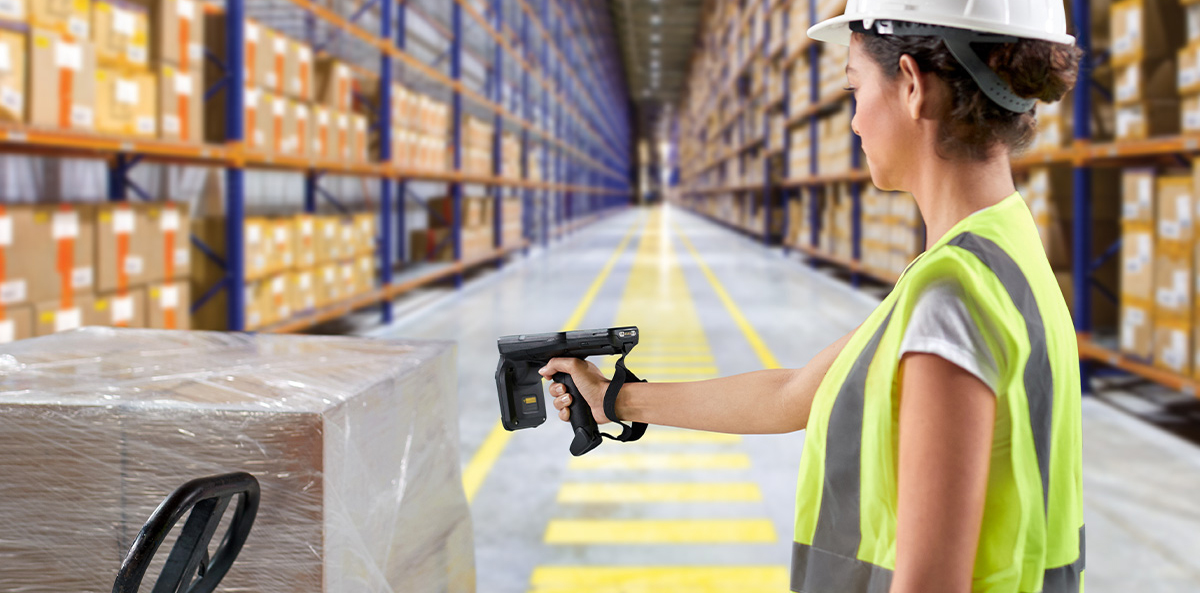
RFID readers – what to remember when making a choice
Deciding on the use of RFID technology you will eventually face the need to choose an RFID reader. Although the term does not fully reflect the capacity of this type of devices, we shall stay with it since it is probably most frequently used in the context of equipment for reading (but also writing) RFID tags.
When talking about an ‘RFID reader,’ interlocutors oftentimes mean completely different things. What is more, they sometimes use the term RFID antenna interchangeably with the word reader. And it should not be surprising since the latter is usually what the end user sees. As if that was not enough, antennas are also the components of RFID tags themselves, which is also frequently a source of confusion.
Let’s try to sort it out a bit, and at the same time point out certain features and functionalities which are worth paying attention to while choosing equipment for reading/writing RFID tags.
While the encoding of labels itself most frequently takes place during their printing, the fact that RFID readers are not only capable of reading data but also writing them should not be forgotten.
While using the term RFID reader we can therefore mean a device like mobile data terminal with a built-in RFID reader, as well as a device connected locally to a computer or so-called gate which consists of a reader and a few antennas. The choice of the right device depends mainly on how you want to use it.
Mobile terminals (computers) with an RFID reader
These are the devices which make it possible to use RFID technology in virtually any place. Depending on hardware configuration and installed software, you can work either work in offline mode or using Wi-Fi or GSM networks.
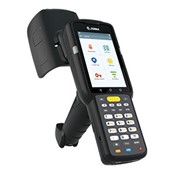
Terminals equipped with touch screens, usually operating in the well-known mobile phone Android environment, are the ideal solution when you want to carry out an inventory, search for a product or, for example, handle the picking process.
As an option, the so-called scanning mounts are available which make it possible to connect any mobile computer or smartphone via Bluetooth. This allows you to use the equipment you already must operate in RFID technology.
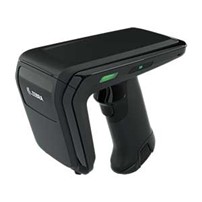
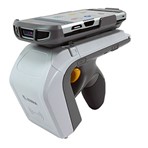
The above-mentioned solutions are also often equipped with barcode and 2D code readers which makes it possible to use various technologies simultaneously.
Stationary RFID readers
When talking about stationary readers we have in mind the devices mounted permanently in one place and used to read tags appearing within their reach, or to be more precise, within the range of antennas connected to them.
Most of those devices make it possible to connect from one to even several or several dozens of external antennas. For simpler application we can choose devices with integrated antennas. Thanks to that we can save space and avoid installation of additional cables and antennas.
Depending on applications, we need to consider the size of devices (some of them, even those with an integrated antenna, are the size of a credit card), place of installation (indoors or outdoors) as well as their resistance, e.g., to possible drops or vibrations.
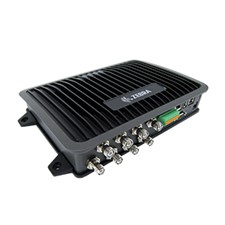
Another, no less important, and probably even more important, issue is the method of communication with the customer’s systems. In the simplest (and sometimes sufficient) case, it is a USB or RS232 connection, but more frequently a network link like Ethernet is used, or a wireless Wi-Fi connection, or optionally cellular networks are used.
It is also worth taking into consideration if there is a need to communicate with external devices such as signal columns or diverse types of sensors. in this case, it is needed to choose a reader with GPIO ports.
RFID antennas
Choosing antennas/antenna is another, not easy, step in the implementation of RFID solutions. Apart from such obvious features as their size (they can be from several centimetres to even one metre and more long), shape and resistance to external conditions, also, or maybe above all, technical parameters are significant.

Starting with connections which make it possible to connect the antenna to the reader (there are several types), through more advanced parameters which have major influence on the quality of reading such as polarization (circular or linear), gain or reading angle.
Accessories and more
In the case of all above-mentioned devices, it is important to pay attention to the fact that they are intended for operation in a particular geographical area because in different areas different RFID frequency ranges are acceptable, e.g., in Europe there is a range of 865-868 MHz.
When planning a purchase and installation of RFID readers, it is worth having in mind that apart from devices themselves we should take into consideration additional, sometimes indispensable components such as cabling (dedicated for particular readers and antennas) or mounting brackets which, on the one hand, make stable mounting of devices possible, and on the other hand enable their location to be easily modified.
The key element is also software which allows devices to cooperate with the customer’s systems.
Bearing in mind the fact that the right selection and configuration of RFID equipment is more complicated than of e.g., bar code readers, it is worth making sure that the equipment supplier can provide support in this area.